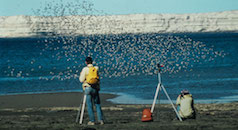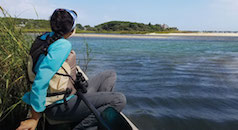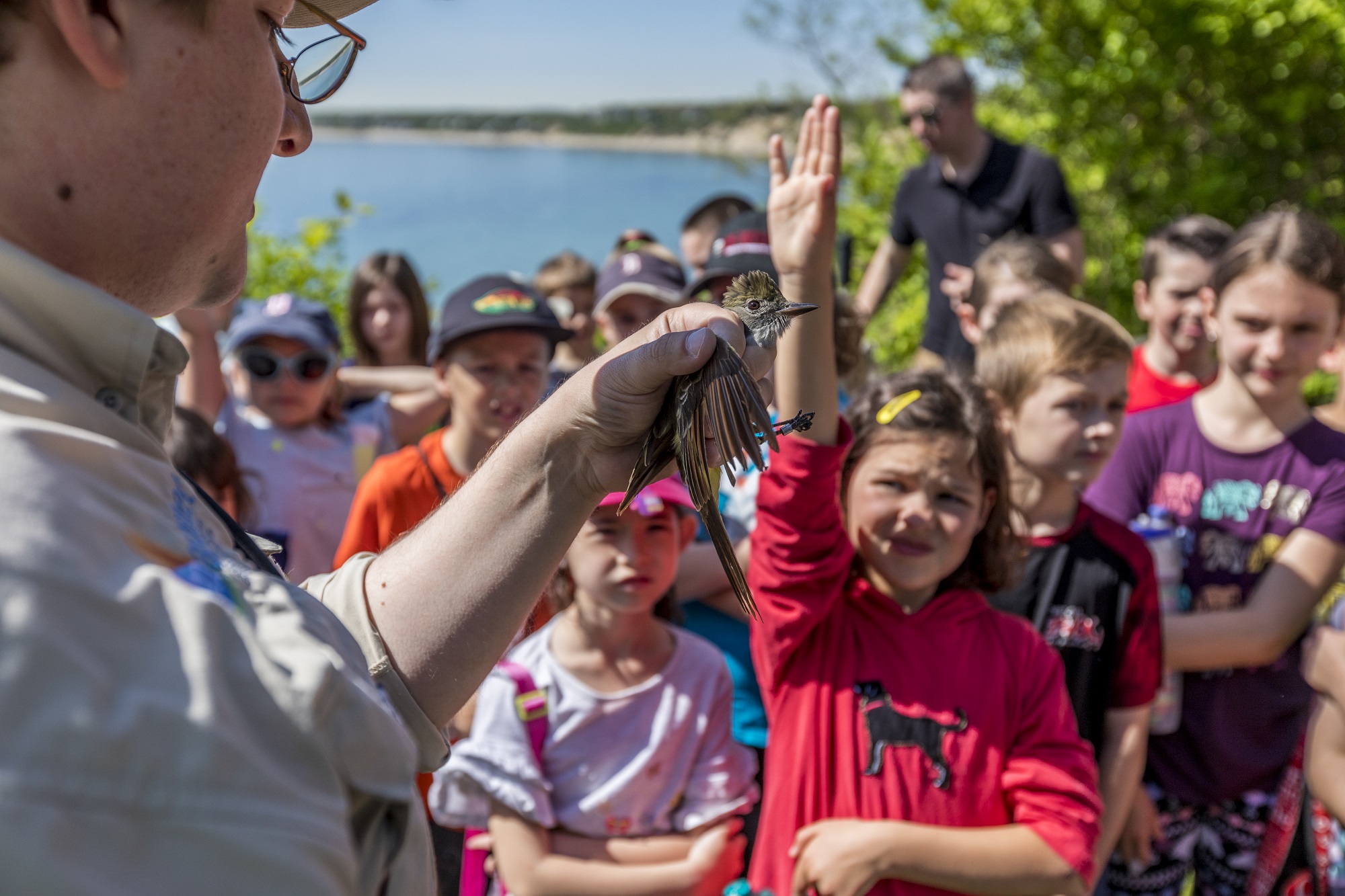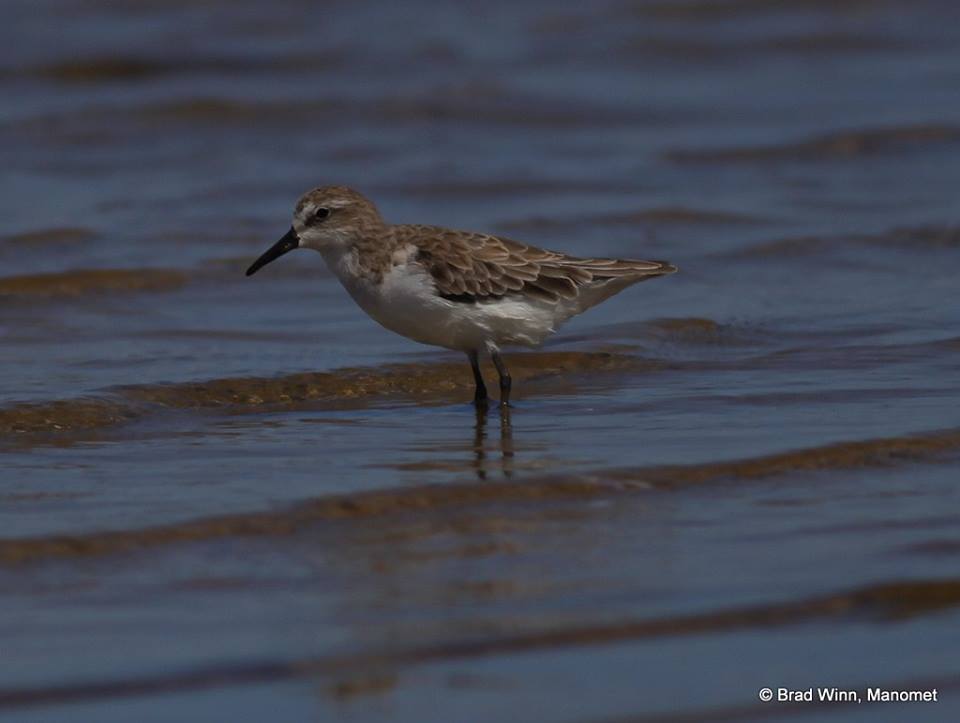
Dorie Klissas
For Immediate Release | Contact: [email protected] | (917) 287-5643
Midcontinent Shorebird Conservation Initiative Strategic Framework Set to Reverse Decline of Shorebird Populations, led by Manomet Conservation Sciences.
Building on shorebird conservation strategies for the Atlantic and Pacific Flyways, the Midcontinent Shorebird Conservation Initiative sets a new standard for collaboration, scientific precision, and large-scale conservation impact.
PLYMOUTH, MA — September 30, 2025 — Manomet Conservation Sciences, a leader in migratory bird conservation for over 50 years, is leading – in partnership with Environment and Climate Change Canada and over 150 other organizations – implementation of the Midcontinent Shorebird Conservation Initiative (MSCI) strategic framework—a milestone developed with partners across the Americas to protect shorebirds and their habitats throughout one of the world’s most complex migratory corridors.
The MSCI framework complements the existing initiatives developed for the Atlantic and Pacific flyways, where shorebirds primarily use coastal environments. The Midcontinent Flyway extends internally through North and South America, and alongside the Atlantic and Pacific Flyways, is one of the three major bird migration corridors in the Western Hemisphere.
Spanning from the Arctic to Patagonia, the Midcontinent Flyway covers diverse habitats including the Great Plains of North America, the Mississippi River Valley, the Andes, the Amazon, the Pampas, and the Patagonian Steppe. Shorebirds along this flyway typically use wetlands and shorelines associated with lakes and rivers, as well as natural and grazed grasslands, and some human-modified habitats, such as agricultural fields. Of the 45 populations of shorebirds along the flyway, 55% have shown long periods of decline, while 9% have increased. In South America, several Andean and interior lowland shorebirds are considered globally “Near Threatened.”
Overall, the latest US State of the Birds 2025 report indicates that birds across most habitats have experienced significant declines since 1970. The recent update to the International Union for Conservation of Nature’s (IUCN) Red List of Threatened Species reveals that 16 migratory shorebird species in the Americas have been reclassified into higher threat categories.
“The Midcontinent Flyway strategic framework is a continent-wide conservation roadmap that unifies actions to address shared threats and works across language and cultures,” said Rob Clay, PhD, one of the initiative’s lead architects, Vice President of Manomet’s Flyways Program, and Director of the Executive Office of the Western Hemisphere Shorebird Reserve Network (WHSRN), hosted at Manomet. “Rather than taking a single species approach, we are prioritizing conservation actions across nations, with a plan to reverse shorebird declines in a truly scalable and collaborative way.”
Clay has been at the forefront of migratory bird conservation in the Western Hemisphere for more than two decades, serving on steering committees for all three major Western Hemisphere flyway initiatives. Launched in 2015, the Atlantic Flyway Shorebird Initiative – which Manomet helps coordinate – provided proof of concept for full life-cycle conservation, following the successful recovery of the American Oystercatcher, which demonstrated that targeted action across jurisdictions could reverse species declines. Although its $90 million funding goal has yet to be met, the initiative successfully aligned conservation priorities, strengthened partnerships among federal agencies, NGOs, and local stakeholders, and improved coordination on shared threats such as beach disturbance and habitat loss.
Subsequently, the Pacific Flyway Shorebird Conservation Initiative was launched to address the need for coordinated conservation across the vast Pacific corridor, from Alaska to Chile, where habitats are facing growing threats from climate change, development, and water scarcity. Manomet is taking a leading role in advancing the initiative’s work across South America.
“The Midcontinent Strategy, built over four years and accelerated through virtual collaboration during the COVID-19 pandemic, engaged more than 300 contributors across languages, disciplines, and borders,” says Clay. “The result is a science-driven, multi-species conservation blueprint that identifies nine priority conservation strategies and unites efforts from the Arctic to Patagonia.”
“We now have a unified, actionable plan to address the double threat shorebirds face in the Midcontinent—pressures affecting both wetlands and grassland habitats,” says Isadora Angarita-Martinez, MSCI Coordinator for South America at Manomet. “We have activated working groups, starting with the working lands working group, to turn strategy into real-world results.”
Highlights of Work Being Done by Manomet in the Midcontinent
Surveys are being conducted in the Brazilian Amazon Basin to assess how shorebirds utilize wetland habitats during their southbound migration. The first two years of surveys coincided with severe drought conditions, making it difficult to provide a critical baseline of habitat quality and availability for shorebirds. Third-year findings should improve our ability to assess quality and availability, providing a baseline for future comparisons.
Manomet is also active in the Lithium Triangle of the southern Andes, spanning Bolivia, Chile, and Argentina, where high-altitude saline lakes on the 3,000-meter plateau provide essential habitat for flamingos and migratory shorebirds. These salt flats and wetlands sustain globally significant bird populations, yet they face growing pressure from lithium extraction as demand for renewable energy increases. Manomet’s efforts focus on raising awareness of the ecological importance of these fragile wetlands and advancing sustainable practices within the mining industry to ensure that the transition to clean energy does not come at the cost of irreplaceable biodiversity.
Further south, in Uruguay, Manomet is working with ranchers along the southern anchor of the Midcontinent Flyway to promote grazing practices that support both livelihoods and shorebird conservation. Coastal Uruguay’s short-grass pampas—once maintained by water cycles and local grazing wildlife and now shaped by cattle grazing—are critical stopover and wintering grounds for migratory shorebirds. With ranchers facing mounting pressure to convert grasslands to soybeans, which offer little value for birds, Manomet is helping to identify strategies that boost beef production while preserving and enhancing vital habitat. By aligning agricultural productivity with conservation, these landscapes can remain both economically viable and ecologically indispensable.
The strategy is designed not only to protect individual species but to benefit entire ecosystems,” says Juliana Bosi de Almeida, PhD, Managing Director of Flyways at Manomet. “Conservation actions focused on flagship birds, such as the Buff-breasted Sandpiper, will simultaneously support dozens of other species that share their habitats and migratory routes, while also helping maintain vital ecosystem services (such as water provision). Manomet’s leadership in this initiative underscores its commitment to partnership-driven conservation.” Other species that inhabit the Midcontinent Flyway include avocets and curlews, plovers and seedsnipes, phalaropes and godwits.
The MSCI is being conducted in partnership with Environment and Climate Change Canada and Conservation of Arctic Flora and Fauna through the Arctic Migratory Bird Initiative.
To learn more and access the Midcontinent Shorebird Conservation Strategy, visit https://midamericasshorebirds.org/.
About Manomet Conservation Sciences:
Manomet is a science-driven conservation organization with deep roots in bird conservation. Teams across the Western Hemisphere focus on improving the health of flyways and ecosystems challenged by climate change and human activities. The organization’s goals are to reverse the decline of shorebirds, promote coastal resilience, and educate and empower the next generation of conservationists. To learn more, go to: https://www.manomet.org/.





 Back to all
Back to all